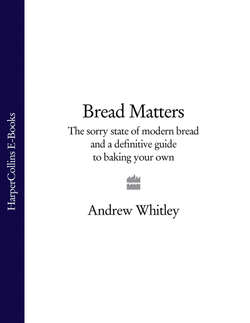Читать книгу Bread Matters: The sorry state of modern bread and a definitive guide to baking your own - Andrew Whitley - Страница 39
Breadmaking machines
ОглавлениеI am often asked (in a ‘lighting the blue touch paper’ sort of spirit) what I think of domestic bread machines. There are certainly a lot of them in circulation – or gathering dust, perhaps. An insurance firm that commissions an annual survey of the least-used household gadgets reported in 2004 that 7.4 million people in the UK own a bread machine but never use it2. What a shame. They could make serious inroads into the eight million large loaves sold each day. And, believe it or not, apart from producing delicious bread with no additives, this might be better for the environment. A well-known miller has calculated that, taking into account the whole process from bakery to shop to consumer, factory bread uses more energy than bread made in a domestic machine. If this is so, it throws interesting light on the whole notion of industrial ‘efficiency’.
After some initial scepticism, I have realised that automatic breadmakers have introduced millions of people to the pleasure of home-made bread. And if at first all the control seems to be in the hands of the machine, users soon discover how to adjust the settings to achieve the results they want. I know one pillar of the wholefood establishment (he also owns a small bakery) who produces wonderful sourdough bread in his domestic breadmaker.
Many a bread journey has begun with one of these machines, a journey to discover how fermentation works and how time, taste and texture are connected. It is often a journey of liberation: as you understand more about the ingredients, you leave behind the programmed settings and risk the ‘sensuous pleasure’ of the process. In my experience, it is a journey that never really ends.
So let’s begin. You don’t need to acquire an expensive array of equipment before you start. But there are some essential tools – both mental and physical – that will be needed along the way. First and foremost, it helps to approach the task in the right frame of mind:
Be patientIf nothing seems to be happening to your dough, it doesn’t mean that something won’t eventually happen.
Watch and learnNotice what happens and when; don’t change more than one variable at a time.
EmpathiseYou are working with living organisms (yeasts and bacteria); do as you would be done by – keep them warm and nourished.
Take it easyYou are making bread to eat, not taking part in a competition, so don’t judge or be judged solely on appearances.
